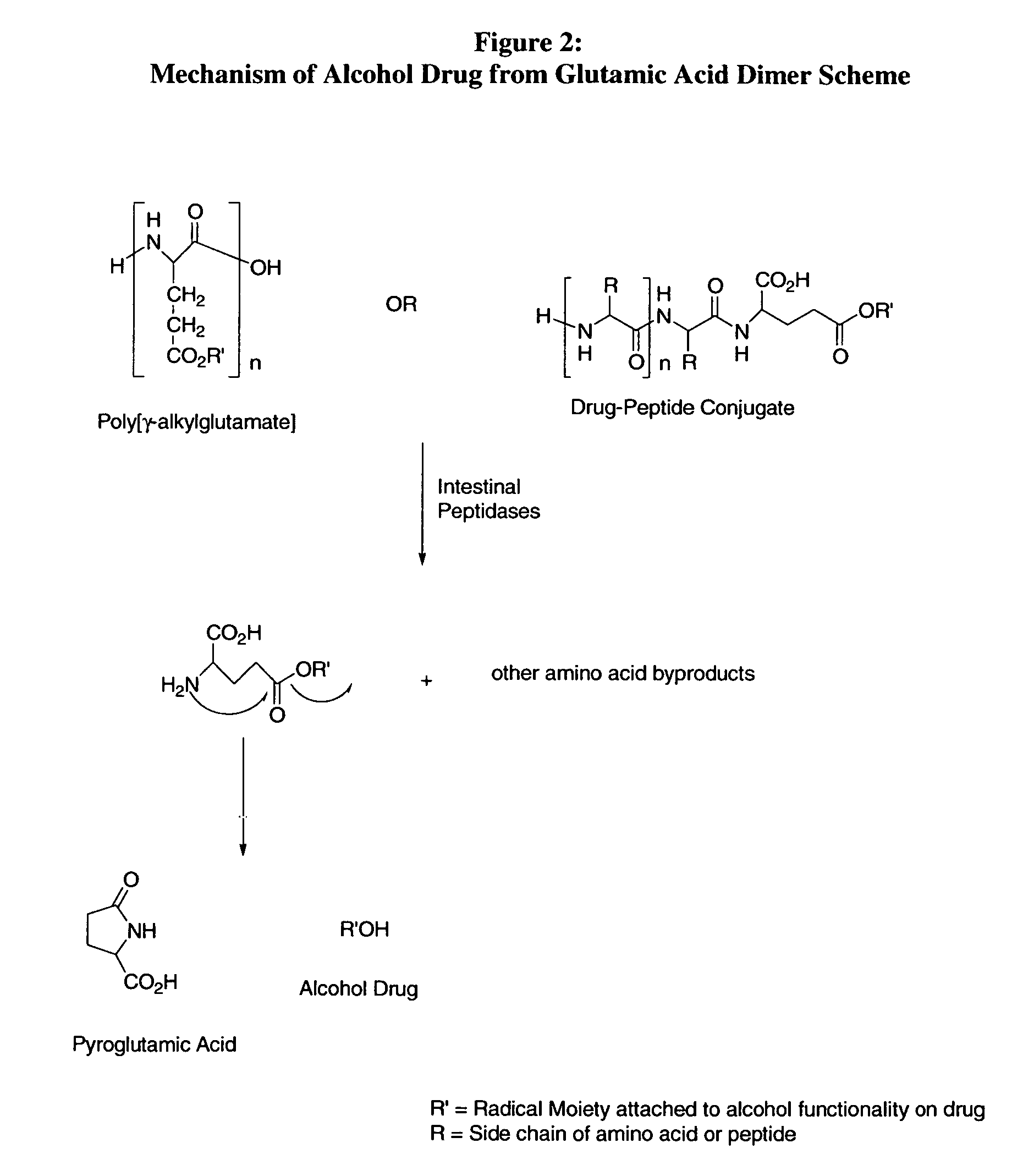Active agent delivery systems and methods for protecting and administering active agents
a technology of active agents and delivery systems, applied in the direction of peptides, microcapsules, drug compositions, etc., can solve the problems of difficult optimization of these properties without losing therapeutic efficacy, not all of these drugs have pharmacokinetic properties, and the drug is poorly absorbed, so as to reduce the solubility of the parent drug, increase the solubility, and increase the absorption
- Summary
- Abstract
- Description
- Claims
- Application Information
AI Technical Summary
Benefits of technology
Problems solved by technology
Method used
Image
Examples
Embodiment Construction
[0134]Throughout this application the use of “peptide” is meant to include a single amino acid, a dipeptide, a tripeptide, an oligopeptide, a polypeptide, or the carrier peptide. Oligopeptide is meant to include from 2 amino acids to 70 amino acids. Further, at times the invention is described as being an active agent attached to an amino acid, a dipeptide, a tripeptide, an oligopeptide, or polypeptide to illustrate specific embodiments for the active agent conjugate. Preferred lengths of the conjugates and other preferred embodiments are described herein. The
[0135]Modulation is meant to include at least the affecting of change, or otherwise changing total absorption, rate of adsorption and / or target delivery. Sustained release is at least meant to include an increase in the amount of reference drug in the blood stream for a period up to 36 hours following delivery of the carrier peptide active agent composition as compared to the reference drug delivered alone. Sustained release ma...
PUM
| Property | Measurement | Unit |
|---|---|---|
| pharmaceutical composition | aaaaa | aaaaa |
Abstract
Description
Claims
Application Information
 Login to View More
Login to View More - R&D
- Intellectual Property
- Life Sciences
- Materials
- Tech Scout
- Unparalleled Data Quality
- Higher Quality Content
- 60% Fewer Hallucinations
Browse by: Latest US Patents, China's latest patents, Technical Efficacy Thesaurus, Application Domain, Technology Topic, Popular Technical Reports.
© 2025 PatSnap. All rights reserved.Legal|Privacy policy|Modern Slavery Act Transparency Statement|Sitemap|About US| Contact US: help@patsnap.com



